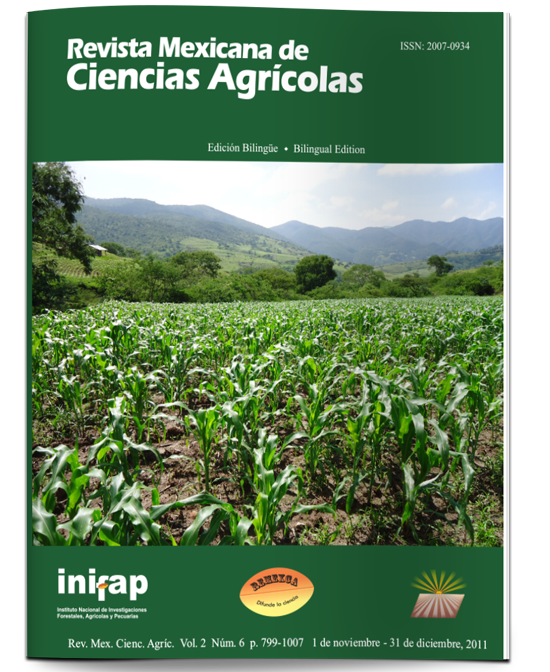FERTILIZATION AND PLANT DENSITY IN VARIETIES OF AMARANTH (Amaranthus hypochondriacus L.)
DOI:
https://doi.org/10.29312/remexca.v2i6.1566Keywords:
Amaranthus hypochondriacus L., DGETA, fertilization, Gabriela and Revancha, plant densityAbstract
The amaranth is a potential crop that is gaining importance in Mexico, because every day there is more demand. This crop is grown under conventional tillage systems and transplant, recently opening up new areas of cultivation used in irrigation and mechanical harvesting. The technology package for the production of amaranth is not fully defined, so that in order to determine the effects of the locality, fertilization, plant density and varieties, the present experiment was established. The experiment was performed in a randomized complete block design with three replicates randomly in the towns of San Miguel del Milagro Montecillo Tlaxcala and Mexico State, three doses (0, 60 and 80 kg ha-1) of N combined with two (30 and 60 kg ha-1) P dose, plant densities of 100 000, 150 000 and 250 000 plants ha-1 and DGTA varieties, Gabriela and Revancha belonging to A. hypochondriacus. The results show that, the locality, fertilization, plant density and plant density interaction∗variety had significant effects on seed yield. The highest yield corresponded to the town of Montecillo, Estado de Mexico, a 80-60-40 and 80-30-40 formulas with a 668.7 and 1 660.9 kg ha-1, respectively, to the variety DGTA (1 778.2 kg ha-1) and plant density of 100 000 plants ha-1. For the plant height, the variety and plant density had significant effects, being the Revancha variety the one that presented a plant height suitable for mechanical harvesting in the three plant densities. In relation to lodging, only fertilization had any effect, resulting in the formula 60-60-40, 60-30-40 and 80-60-40 with percentages of 37.21, 36.98 and 35.9, respectively.
Downloads
Downloads
Published
How to Cite
Issue
Section
License
The authors who publish in Revista Mexicana de Ciencias Agrícolas accept the following conditions:
In accordance with copyright laws, Revista Mexicana de Ciencias Agrícolas recognizes and respects the authors’ moral right and ownership of property rights which will be transferred to the journal for dissemination in open access. Invariably, all the authors have to sign a letter of transfer of property rights and of originality of the article to Instituto Nacional de Investigaciones Forestales, Agrícolas y Pecuarias (INIFAP) [National Institute of Forestry, Agricultural and Livestock Research]. The author(s) must pay a fee for the reception of articles before proceeding to editorial review.
All the texts published by Revista Mexicana de Ciencias Agrícolas —with no exception— are distributed under a Creative Commons License Attribution-NonCommercial 4.0 International (CC BY-NC 4.0), which allows third parties to use the publication as long as the work’s authorship and its first publication in this journal are mentioned.
The author(s) can enter into independent and additional contractual agreements for the nonexclusive distribution of the version of the article published in Revista Mexicana de Ciencias Agrícolas (for example include it into an institutional repository or publish it in a book) as long as it is clearly and explicitly indicated that the work was published for the first time in Revista Mexicana de Ciencias Agrícolas.
For all the above, the authors shall send the Letter-transfer of Property Rights for the first publication duly filled in and signed by the author(s). This form must be sent as a PDF file to: revista_atm@yahoo.com.mx; cienciasagricola@inifap.gob.mx; remexca2017@gmail.
This work is licensed under a Creative Commons Attribution-Noncommercial 4.0 International license.



